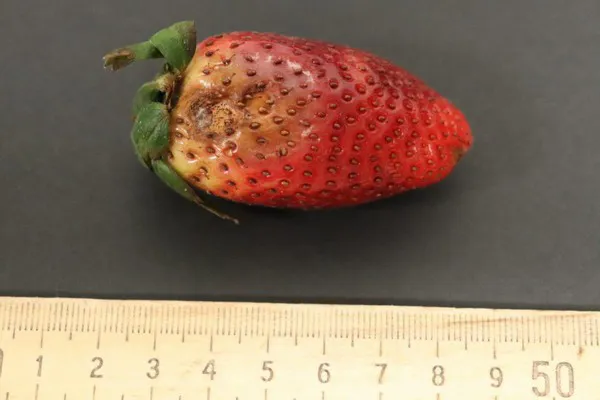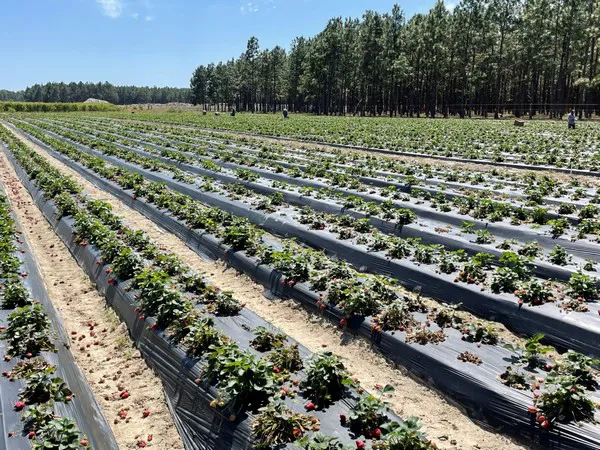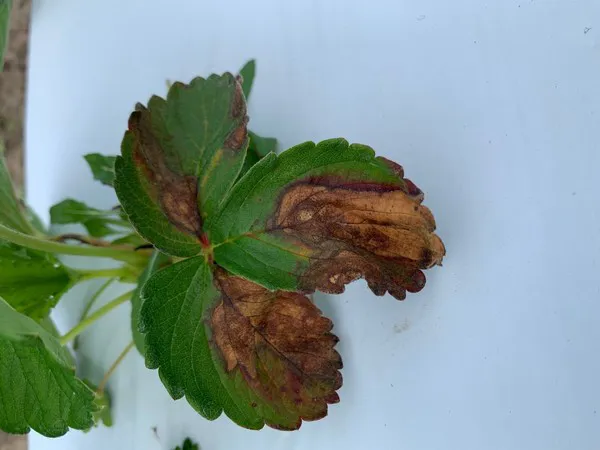What a difference a month can make. One month ago, nobody was seeing major issues with Neopestalotiopsis, the new disease of strawberries that have caused headaches for Florida strawberry production. Unfortunately, just as in Florida, the more aggressive form of Neopestalotiopsis is causing damage on strawberry farms in several southern Georgia counties at this time. The association with one North Carolina nursery is very strong. All sites with confirmed Neopestalotiopsis received strawberries from the same nursery. Based on trials in Florida and as reported last fall, Thiram and Switch are the only fungicides that have efficacy against this organism, and even their activity is not great.

Strawberry with Neopestalotiopsis spot and pepper-like fruiting structures in spot (photo provided by Ansuya Jogi; University of Georgia Plant Pathology Department).
Once introduced, initial reports are that it stays in the field from year to year, without regard to nursery source in follow-on years. That means that it either survives on older residue or alternative hosts that surround strawberry plantings, such as possibly wild blackberry. Initial information indicates that removing spotted leaves, starting in the fall, and destroying these rogued leaves outside the field may be of value. If so, this should be done when plants are dry (later in the day once dew has dried off) to prevent further spread and infection through these activities. If you have had a problem with this disease in 2021 production fields, rotate to another site for strawberry production if possible.

Dead and dying strawberry plants with Neopestalotiopsis (image from Shane Curry, Appling County Cooperative Extension Service)

Neopestalotiopsis spots and pepper-like fruiting structures in spots (photo from Mark Frye; Wayne County Cooperative Extension Service)
Also, in the future, make sure to purchase disease-free plants from nurseries that are not known to harbor this pathogen. This disease is new to all of us, and we simply do not have a good understanding of this pathogen, its survival from year to year, spread, or control. Stay tuned. Below are some photographs and results of research trials from Florida (see link here).
For more information:
University of Georgia
www.uga.edu
